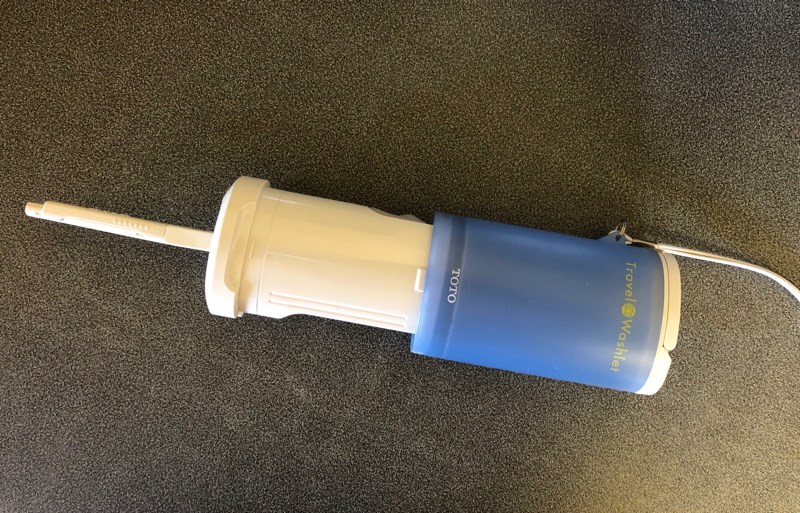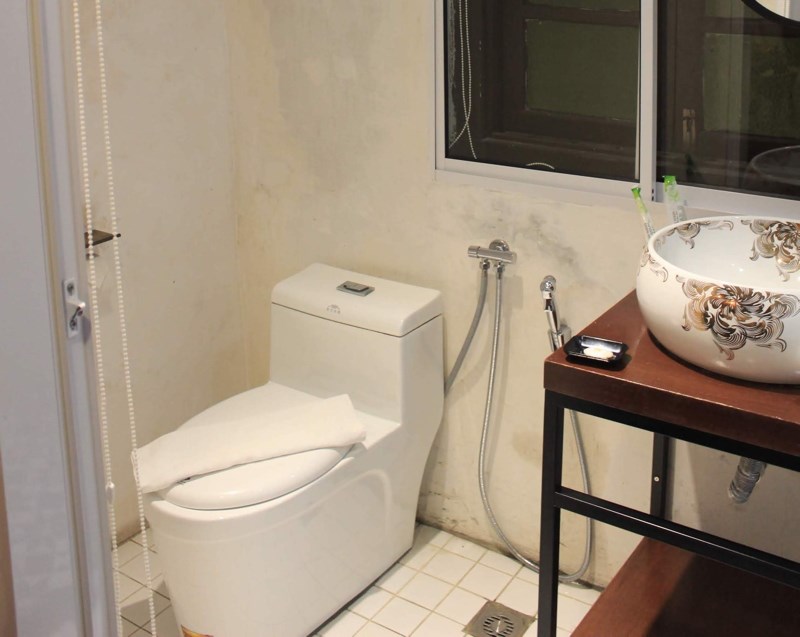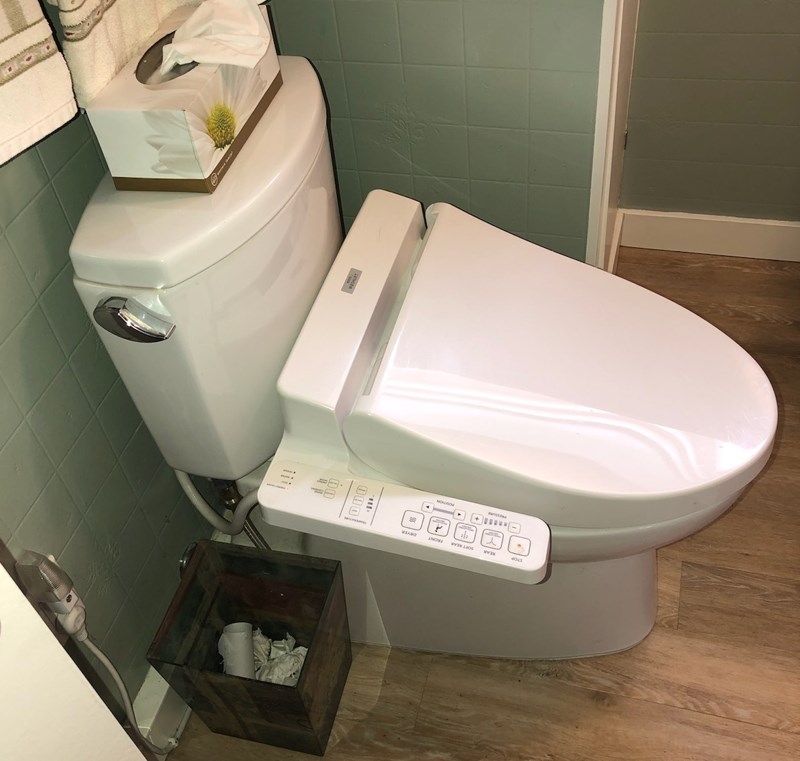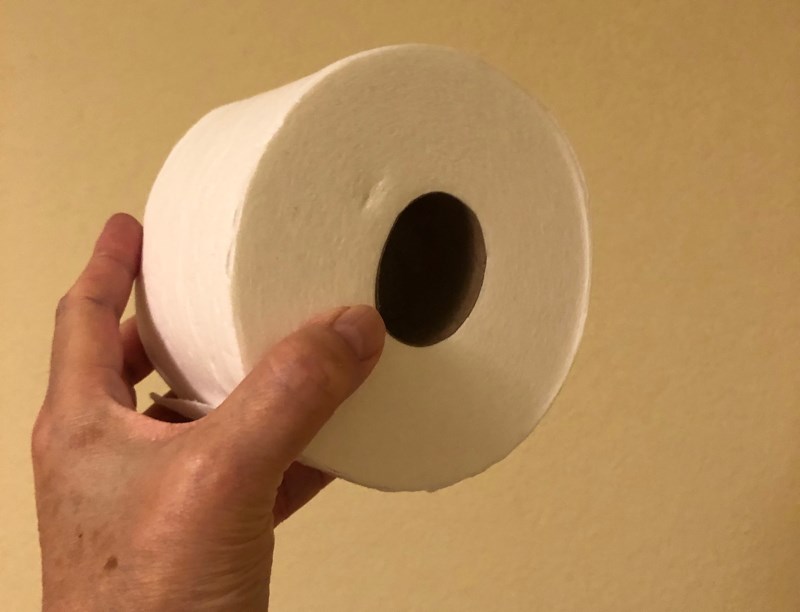There is plenty of toilet paper in town, but it mostly isn’t on store shelves. It’s stacked up in huge volume in homes. So, if you missed out on the great toilet-paper shopping spree, you might be running low, with no re-supply in sight.
Here are some alternatives, ranked from easy to requiring a plumber and electrician.Ìý
Obviously, use other paper products. Not so obviously, definitely do not flush these paper products down the toilet. Use facial tissue, a piece of paper towel, a coffee filter, pre-moistened wipes, or part of a newspaper page. Again, do not flush these things down the toilet. Put them in the garbage. If you flush, you risk clogging the toilet and the sewage system, . Even some kinds of facial tissue could cause a clogging problem.
This one has been suggested by numerous people, but never tried by me. Do your morning business while naked; get into the shower immediately after you flush, and rinse away what you would have wiped with toilet paper. This will be most effective and precise if you have a handheld shower head. It is an inefficient method, of course, after you’ve dressed for the day. It might gross out housemates who use the same shower.
A sports water bottle with an integrated bent tube. I’ve never tried, but I’ve heard it pitched as something that sort of works. Would there be enough pressure to be effective?

I’ve tried this one and it works quite well. Use a handheld battery-powered device with a small tank that you fill with warm water. A little arm with nozzles swings out. Push a button and a little motor sprays an assertive but still gentle stream of water that you can aim with decent precision at the areas you need to clean (or, in the language of the promo pamphlets, cleanse). One of the models is called the Toto Travel Handy Washlet. Another is sold under the Panasonic name. I have seen them at bathroom fixture stores. But they might be as hard to find as toilet paper.

Install a hose and sprayer connected to your toilet water supply via a splitter. There are kits designed for this purpose. My daughter, travelling in Malaysia, encountered hoses next to toilets everywhere. Toilet paper was not on offer. She never quite got the hang of using the hoses and often got her clothing wet.
Install a designed-for-toilets sprayer that sits at the back of the bowl. The sprayer flow is controlled by a dial that hangs off the side. The water comes from the toilet water supply via a splitter. That water will be cold.
All the devices mentioned above were on sale in the recent past for under $100. I’ve seen them at hardware and plumbing supply shops.
Here are a couple of less practical options for the short term (unless you have them installed already), that cost $1,000 and up:Ìý

There’s the bidet seat, which is a toilet seat with a lot of gear attached to it plunked onto a compatible toilet. It sprays warm water with precision and some models have a dryer.
You’ll need a power outlet on the wall near the toilet base. In most North American residential bathrooms, that outlet doesn’t exist, so you’ll need to get one installed to power the seat’s electronics, motor and heater.
A splitter at the toilet water supply sends water for spraying. Electronic controls are attached to the side of the toilet seat, are on a wall or on a handheld remote. When you’re ready for cleaning, press a button for the spray wand to come into position and start spraying a heated stream of water.
Press other buttons to move the spray wand back and forth (positioning can be pre-set for individual users). Some units have a dryer.
A couple of friends have encountered these bidet toilet seats while travelling and confessed to bypassing them in favour of toilet paper because the maze of controls confused them.
Then there’s the standalone bidet, essentially a sink that you sit on or hover over, typically installed next to the toilet. The unit sprays water for cleaning. That water drops back into the bowl, to be rinsed away. There’s the option of having hot and cold water controls. You need quite a bit of plumbing for this, and installing one into an existing bathroom would be an ordeal. Using a bidet can be complicated enough to require a multi-step web page with illustrations.
There are plenty of other toilet-paper alternatives, from pieces of diaper, cloth towel, or old undershirt (you could wash these after use with soap and hot water), to tree leaves, corn husks and rocks. I’m hoping I don’t need to go that route.



